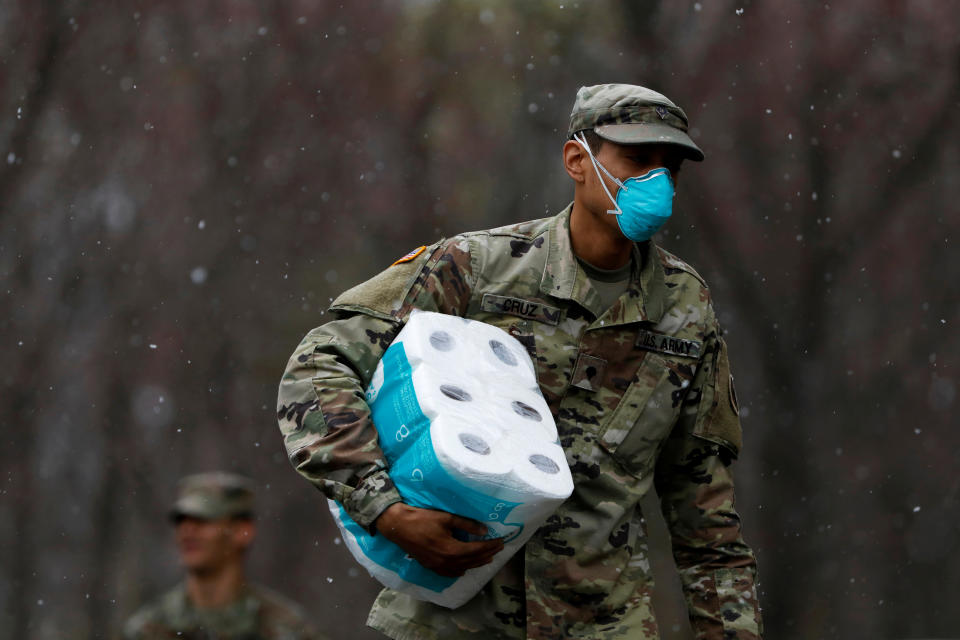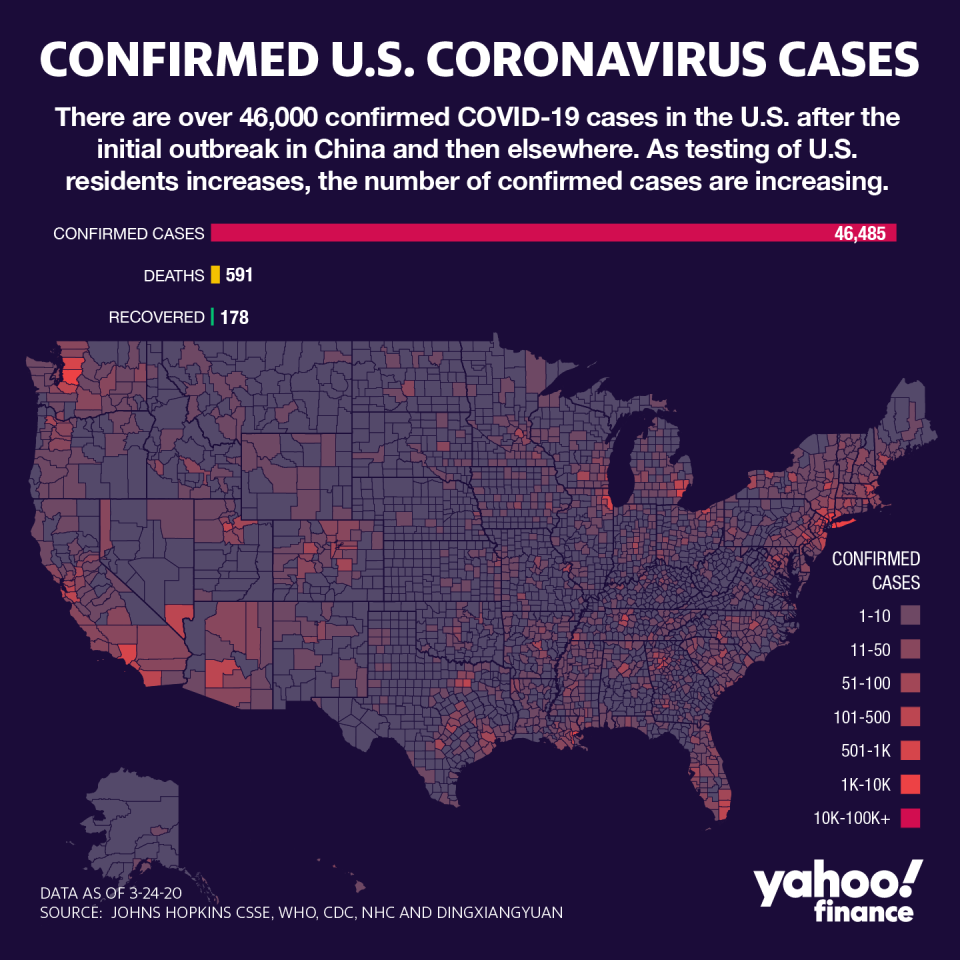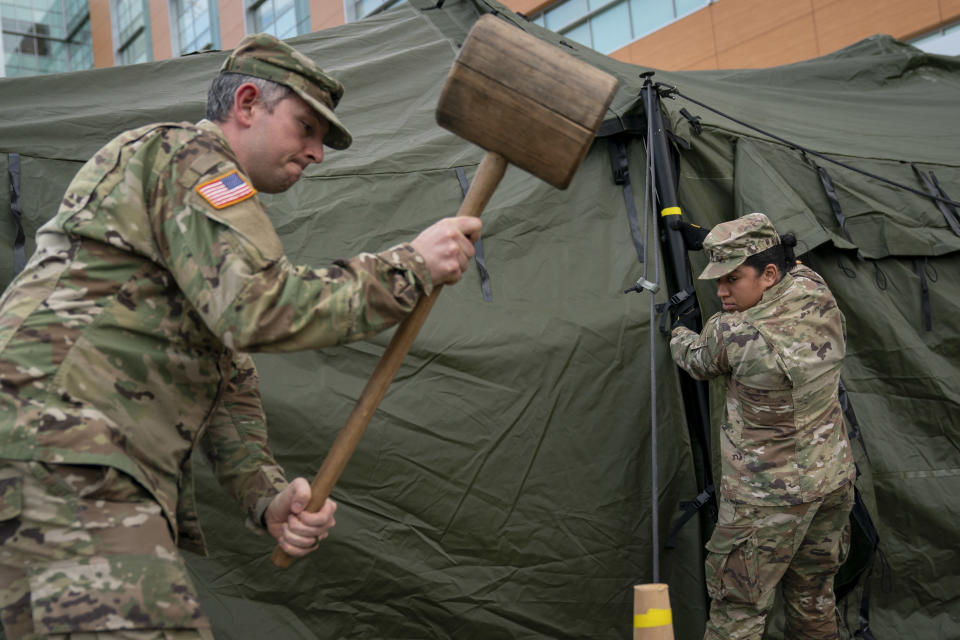Coronavirus and military help: Former NATO commander details '3 crucial things'
The U.S. National Guard is on call amid the coronavirus outbreak.
In New Rochelle, New York, which has been exceptionally hard hit by the virus, members of the Guard have helped unload pallets of food — pancake mix, bags of long grain rice, and so on — for the community. The Guard is also activated in California and Washington.
And military resources can do “quite a bit,” former NATO Supreme Allied Commander James Stavridis said on Yahoo Finance’s The First Trade, and there are “three crucial things to bear in mind here.”

#1: Military is has experience with crisis situations
Stavridis said that first and foremost, the military is highly equipped to work in crisis situations as logistical support.
“Number one, we need to take advantage of the skill sets that the military actually has,” Stavridis explained. “In other words, the military is not going to show up with thousands of doctors and nurses, but the military can come with logistics, with trucks, with aircrafts, with crowd control personnel, with construction units.”
Stavridis noted that during the Ebola crisis, “we built hospitals very, very quickly.” During the cholera outbreak, the military carried out water purification. “There is a huge logistic muscle piece of this,” he stressed. “Tap the military for what the military is very good at.”

#2: The military is not going to replace doctors and nurses
The second point to remember is that the military isn’t going to replace medical personnel.
“Don’t regard the military as a panacea,” Stavridis advised. “At the end of the day, the frontline people here are going to be the civilian medical personnel.”
He added that he has two son-in-laws who are both physicians — one of them an emergency room doctor — and they are the true front lines.
“The military has to back up those medical personnel,” Stavridis stressed.”You don’t want to turn this over to the military for command and control.”

#3: No need for martial law
The third piece — and one which has been making the rounds on social media — is that martial law has not been declared, and nor is there a need to do so, Stavridis stated.
“We’re nowhere near” declaring martial law, and “nor should we get there,” Stavridis said. “We have to have our civilian leaders … that command and control has to be from the civilians so we preserve civilian control of the military.”
—
Aarthi is a reporter for Yahoo Finance. She can be reached at aarthi@yahoofinance.com. Follow her on Twitter @aarthiswami.
Read more:
House Democrats unveil bill to cancel $30,000 in student debt per borrower amid coronavirus
Coronavirus student loan relief: Education Department says borrowers can ask for a payment pause
Student loan reform group sues Education Secretary Betsy DeVos and CFPB Director Kathy Kraninger
Read the latest financial and business news from Yahoo Finance
Follow Yahoo Finance on Twitter, Facebook, Instagram, Flipboard, SmartNews, LinkedIn, YouTube, and reddit.


